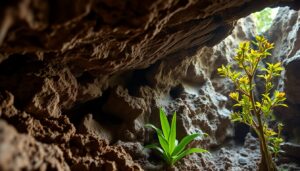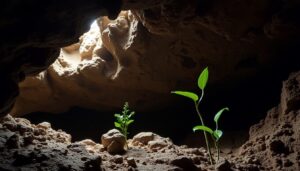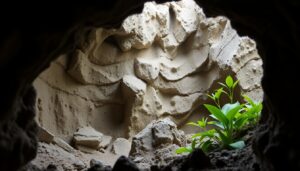Belize, renowned for its stunning coral reefs and ancient Maya ruins, conceals an incredible array of extraordinary archaeological and ecological treasures beneath its surface. The vast network of limestone cave systems has long fascinated both researchers and adventurers alike, providing invaluable insights into the ancient Maya ritual life, thorough climate records, and unique subterranean ecosystems. Recent scientific investigations within the caves of Belize have led to remarkable discoveries that not only enhance our understanding of the Maya civilization but also illuminate historical climate fluctuations and unveil the existence of rare, previously unidentified cave species.

1. Delve into the Enigmatic History of Maya Ritual Practices Uncovered in Belizean Caves
The intricate cave systems of Belize, including the famous Actun Tunichil Muknal (ATM Cave), Barton Creek Cave, and Cara Blanca Caves, have yielded some of the most compelling archaeological evidence regarding Maya sacrificial and ceremonial practices. These revered caves were viewed as gateways to the Maya underworld, known as Xibalba. Recent archaeological discoveries have notably enriched our understanding of their profound spiritual and societal significance, revealing layers of complexity and cultural richness that were previously overlooked.
1.1 The Fascinating Revelation of the “Crystal Maiden” Identity
The iconic calcified skeleton, widely known as the Crystal Maiden, found within ATM Cave, has traditionally been categorized as the remains of a female sacrifice. However, cutting-edge forensic analysis has prompted a significant reevaluation of this long-standing assumption. Through advanced isotopic and morphological studies, researchers now suggest that these remains are likely from a young male. This pivotal finding invites scholars to reconsider the social and religious dynamics that influenced human sacrifices in Maya ritual practices, particularly during environmental crises, such as the severe droughts experienced around the 9th century CE.
1.2 New Perspectives on the Context of Maya Ritual Practices
Ongoing excavation efforts in Barton Creek and Cara Blanca have unveiled previously undocumented ceremonial chambers, complete with intact pottery assemblages and human remains, including infants and adults. The presence of “kill holes” punctured through ceramic vessels indicates a prevalence of ritualistic ceremonies aimed at “spirit release” performed within these sacred caves. These findings imply that Maya cave rituals were not just more intricate but also widely practiced across various regions, reflecting a rich tapestry of diverse cultural practices and beliefs.
1.3 The Convergence of Maya Cave Rituals and Archaeoastronomy
Recent studies have revealed alignments of cave altars and hieroglyphic inscriptions that correlate with important solar events, including equinoxes and solstices. By utilizing laser scanning and photogrammetry techniques, researchers have confirmed that beams of natural light penetrate deeply into select caves on sacred dates, illuminating focal points designated for ritual activities. This compelling evidence supports the theory that Maya priests used caves not only as spiritual sanctuaries but also as astronomical observatories, closely linked to their complex calendrical systems and ritualistic practices.
2. Uncovering Paleoclimate Insights from Cave Stalagmites in Belize
Comprehensive analysis of various stalagmites from caves such as Caves Branch and Actun Halal has enabled scientists to date and study stable oxygen and carbon isotopes, yielding intricate paleoclimatic records. The layered structures of these mineral deposits create year-by-year chronologies of humidity and rainfall, which correlate strongly with archaeological evidence of societal transformations and the eventual collapse of the Maya civilization around 900 CE. These vital findings uncover critical climate shifts that significantly impacted the region's historical narrative.
Researchers have identified notable declines in precipitation, termed megadroughts, which likely challenged food production systems and prompted an increase in ritualistic activities within the caves. The paleoclimate reconstructions derived from Belize’s caves represent some of the most comprehensive climatic records in Mesoamerica, offering essential insights into how natural climate variations have influenced human history and societal evolution.

3. Exploring Biodiversity: The Exceptional Ecosystems Concealed Within Belize's Caves
Beyond their archaeological and geological importance, the caves of Belize are vibrant ecosystems that harbor rare life forms uniquely adapted to survive in perpetual darkness and isolation. Recent speleobiological expeditions have documented a wide variety of unique species, including blind crustaceans and specialized cave fish, alongside distinct bat colonies exhibiting unusual behaviors. These findings highlight the ecological significance of Belize’s caves and their critical role in maintaining biodiversity.
3.1 Identifying New Species and Patterns of Endemism
Researchers have discovered multiple new species of crustaceans endemic to the subterranean waters of Belize, showcasing remarkable genetic adaptations indicative of prolonged evolutionary isolation. Furthermore, various cave systems support bat species crucial to Belize’s biodiversity, including fruit bats, which play essential roles in seed dispersal and pollination, thereby contributing to the overall health of local ecosystems.
3.2 Unveiling Subterranean Lakes and Their Unique Inhabitants
The exploration of previously unmapped cave passages has led to the discovery of water-filled chambers inhabited by previously unknown fauna. These subterranean lakes may host extremophile microorganisms akin to those hypothesized to exist on other planets, capturing the interest of both astrobiology and microbiology researchers. These discoveries could offer critical insights into the adaptability of life in extreme conditions, expanding our understanding of biological resilience.
4. Grasping the Wider Implications of Recent Discoveries
- Comprehensive Insights into Maya Studies: The archaeological and paleoclimatic knowledge acquired from Belize’s caves significantly enriches narratives surrounding ritual practices, political turmoil, and climate-induced societal transformations.
- Conservation Importance: These caves are not only crucial heritage sites but also biodiversity hotspots that require protection from tourism and environmental threats to preserve their ecological and historical integrity.
- Influence on Sustainable Tourism: Implementing sustainable, guided access to these caves is vital for maintaining their structural integrity while providing enriching educational and cultural tourism experiences.
5. Essential Guidelines for Responsible Visits to Belizean Caves
Due to their archaeological sensitivity, prominent caves like ATM require guided tours led by licensed professionals, typically based in San Ignacio. Tourist groups are intentionally kept small and carefully managed to protect fragile artifacts and delicate ecosystems. Photography may be restricted inside many caves to prevent potential damage, thereby enhancing the authentic and transformative experience for visitors.

Visitors are advised to wear appropriate footwear, be prepared for physical activities such as swimming and climbing, and to respect the local spiritual traditions associated with these caves.
6. Valuable Resources for Further Exploration of Belizean Caves
- Smithsonian Magazine: New Evidence on ATM Cave’s ‘Crystal Maiden’
- National Geographic: Unveiling the Secrets of Maya Caves
- Cambridge University Press: Insights into the Cara Blanca Caves of Belize
- Solar Alignments in Belizean Caves – Archeoastronomy Journal
- Science Advances: The Impact of Climatic Events on Maya Civilization Collapse
- Speleological Society: Researching Cave Biodiversity in Belize
The caves of Belize continue to serve as gateways to ancient worlds, climatic histories, and unique biological realms. Each expedition into their depths holds the potential for groundbreaking insights, establishing Belize as an invaluable treasure in both archaeological and natural sciences.
The Article Recent Discoveries in Belizean Caves: Archaeology, Climate, and Biodiversity Unveiled first appeared on Belize Travel Guide.
The Article Belizean Caves: Unveiling Archaeology, Climate, and Biodiversity Was Found On https://limitsofstrategy.com

